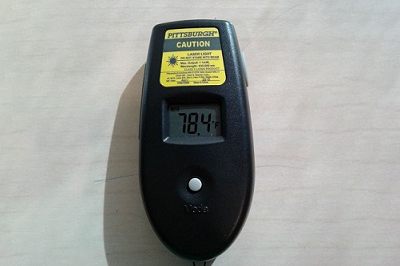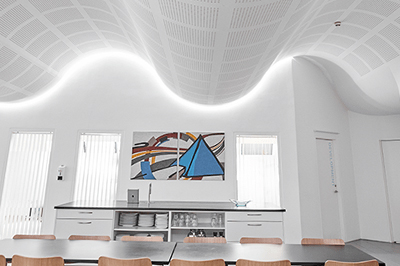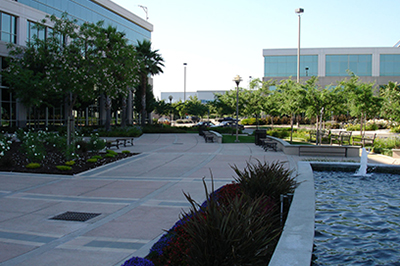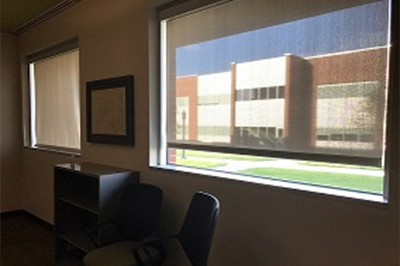Design Components
Design Components
Room Temperature (RT)
From the supporting literature (linked above), the measure of room temperature (Fahrenheit) usually taken in 5 different spots (center and near window or door) of the room. Works of literature on room temperature were reviewed and there was a consensus that the building design, building envelope, and lighting fixtures influence the thermal comfort of a room.
Recommendations
1. Promote the use of building envelope that enhances thermal, visual and acoustic comfort.
2. Implement building codes that guarantee thermal, visual, and acoustic comfort.
Orientation of Window (TC.OW)
Direction Window Face in a room.
From the supporting literature (linked above), Northern and Southern classroom orientations improve energy saving in buildings. Classroom window orientation influences the amount of air that goes in and out of a classroom, and also the quality of indoor air.
Operable Window (Op.W)
Windows in classrooms are operable and provide cross ventilation affecting rooms temperature and air circulation.
From the supporting literature (linked above), it is important to have operable windows in classrooms to ensure cross ventilation and a healthy indoor air quality. Classroom temperature usually appears higher than as designed, hence the need to have operable windows to control and balance indoor temperature.
Form/Shape Variation (FSV)
The shape of the room/ irregular configuration, the geometry of the space affects thermal comfort.
From the supporting literature (linked above), the geometry of classroom space influence its thermal comfort and also impacts occupants health. This includes the height, shape, and form of the classroom. There is a relationship between the school physical setting, building envelope, and thermal comfort of a classroom. These interactions influence educational activities and students behavior. The form/shape variations in a classroom can make a difference in the extent to which classroom thermal comfort is influenced.
Recommendations
1. Avoid irregular shapes and forms in the design of classrooms.
2. The classrooms should be such that teachers can easily modify the space and configuration.
Topology and Landscape Structure (TLS)
Structures/ Buildings below the ground.
From the supporting literature (linked above), classroom temperature could be influenced by the topography of the premises. Perhaps, the Attention Theory that talks about nature exposure also influence classroom temperature. It was observed that topography, environment, school design, and community conception affects classroom thermal comfort and students performance.
Recommendations
1. Avoid building on a surface where the topography of the premises blocks classroom window views.
Windows (W)
The ratio of total window area to total wall area.
From the supporting literature (linked above), the size and dimension of windows in a classroom relative to the entire wall area of the classroom is a key factor in determining the thermal comfort of the classroom. It is necessary to consider classroom size in the design and selection of window sizes and dimensions. The thermal comfort of a classroom will be affected if the window sizes and dimensions are too big or small for the classroom size.
Recommendations
1. The design and selection of classroom window size and dimension should be proportionate to classroom size.
References
1. Aiello, J. R; De Carlo Aiello, T (1974) The development of personal space: Proxemic behavior of children 6 through 16. Human Ecology, 2(3), 177-189.
2. Barret, P; Zhang, Y; Moffat, J; Kobbacy, K (2013) A holistic, multi-level analysis identifying the impact of classroom design on pupils’ learning. Building and Environment, 59, 678-689.
3. Barrett, P; Davies, F; Zhang, Y; Barrett, L (2015) The impact of classroom design on pupils’ learning: Final results of a holistic, multi-level analysis. Building and Environment, 89, 118-133.
4. Becker, R., Goldberger, I., & Paciuk, M. (2007). Improving energy performance of school buildings while ensuring indoor air quality ventilation. Building and Environment, 42(9), 3261-3276.
5. Bishop-Williams, K.E; Berke, O; Pearl, D.L; Kelton, D.F (2015) A spatial analysis of heat stress related emergency room visits in rural Southern Ontario during heat waves. BMC Emerg Med, 15.
6. Blincoe, J.M (2008) The age and condition of Texas high schools as related to student academic achievement. College of Education, University of Texas at Austin.
7. Blum, R (2007) Best Practices: Building Blocks for Enhancing School Environment. John Hopkins Bloomberg School of Public Health, Baltimore, Maryland.
8. Brown, Z.B (2009) Occupant Comfort and Engagement in Green Buildings: Examining the Effects of Knowledge, Feedback, and Workplace Culture. The University of British Columbia, Vancouver, BC.
9. Dibugonwanyi, A., J (2017) Towards Effective Early Childhood Education Plant Planning. European Scientific Journal, 8(1), 165- 176.
10. Duyar, I (2010) Relationship between school facility conditions and the delivery of instruction: Evidence from a national survey of school principals. Facilities Management, 8(1), 8-25.
11. Earthman, G.I (2004) Prioritization of 31 criteria for school building adequacy. American Civil Liberties Union Foundation of Maryland. Retrieved in 2016, Baltimore, MD.
12. Evans, G.W (2006) Child Development and the Physical Environment. Annual Review of Psychology, 57, 423-51.
13. Fisher, Kenn (2000) Building Better Outcomes: The Impact of School Infrastructure on Student Outcomes and Behaviour. Schooling Issues Digest. Department of Education, Training and Youth Affairs, Australia.
14. Katyal, N.K (2002) Architecture as Crime Control. The Yale Law Journal, 111, 1039 – 11139.
15. Lewis, L; Snow, K; Farris, E; Smerdon, B; Cronen, S; Kaplan, J; Greene, B (2000) Condition of America’s Public School Facilities: 1999 (NCES 2000-032). National Center for Education Statistics U.S. Department of Education, Washington D.C.
16. Lumpkin, R.B; Godwin Jr., R.T; Hope, W.C; Lutfi, G (2014) Code Compliant School Buildings Boost Student Achievement. SAGE Open, 1-8
17. Matsuoka, R. H (2010) Student performance and high school landscapes: Examining the links. Landscape and Urban Planning, 97, 273-282.
18. Mumovic, D; Palmer, J; Davies, M; Orme, M; Ridley, I; Oreszczyn, T; Judd, C; Critchlow, R; Medina, H.A; Pilmoor, G; Pearson, C; Way, P (2009) Winter indoor air quality, thermal comfort and acoustic performance of newly built secondary schools in England. ELSEVIER, 44(7), 1466-1477.
19. Norbäck, D (2009) An update on sick building syndrome. Current Opinion in Allergy and Clinical Immunology, 9, 55-59.
20. Oral, G.K; Yene, A.K; Bayazit, N.T (2004) Building envelope design with the objective to ensure thermal, visual and acoustic comfort conditions. Building and Environment, 39(3), 281-287.
21. Pereira, L. D., Raimondo, D., Corgnati, S. P., & da Silva, M. G. (2014). Assessment of indoor air quality and thermal comfort in Portuguese secondary classrooms: methodology and results. Building and environment, 81, 69-80.
22. Sleegers, P.J.C; Moolenaar, N.M; Galetzka, M; Pruyn, A; Sarroukh, B.E; van der Zande, B (2013) Lighting affects students’ concentration positively: Findings from three Dutch studies, Lighting Research & Technology, 45, 159–175.
23. Vacha, J., A (2006) Inspiring Minds: Creating Community in the Classroom. DigitalCommons@University of Nebraska, Lincoln.
24. Wei, X; Wei, H; Viadero, R. C., Jr (2011) Post-reclamation water quality trend in a Mid-Appalachian watershed of abandoned mine lands. Sci Total Environ, 409(5), 941-8.
25. Woolner, P; McCarter, S; Wall, K; Higgins, S (2012) Changed learning through changed space: When can a participatory approach to the learning environment challenge preconceptions and alter practice? Improving Schools, 15(1), 45-60.










